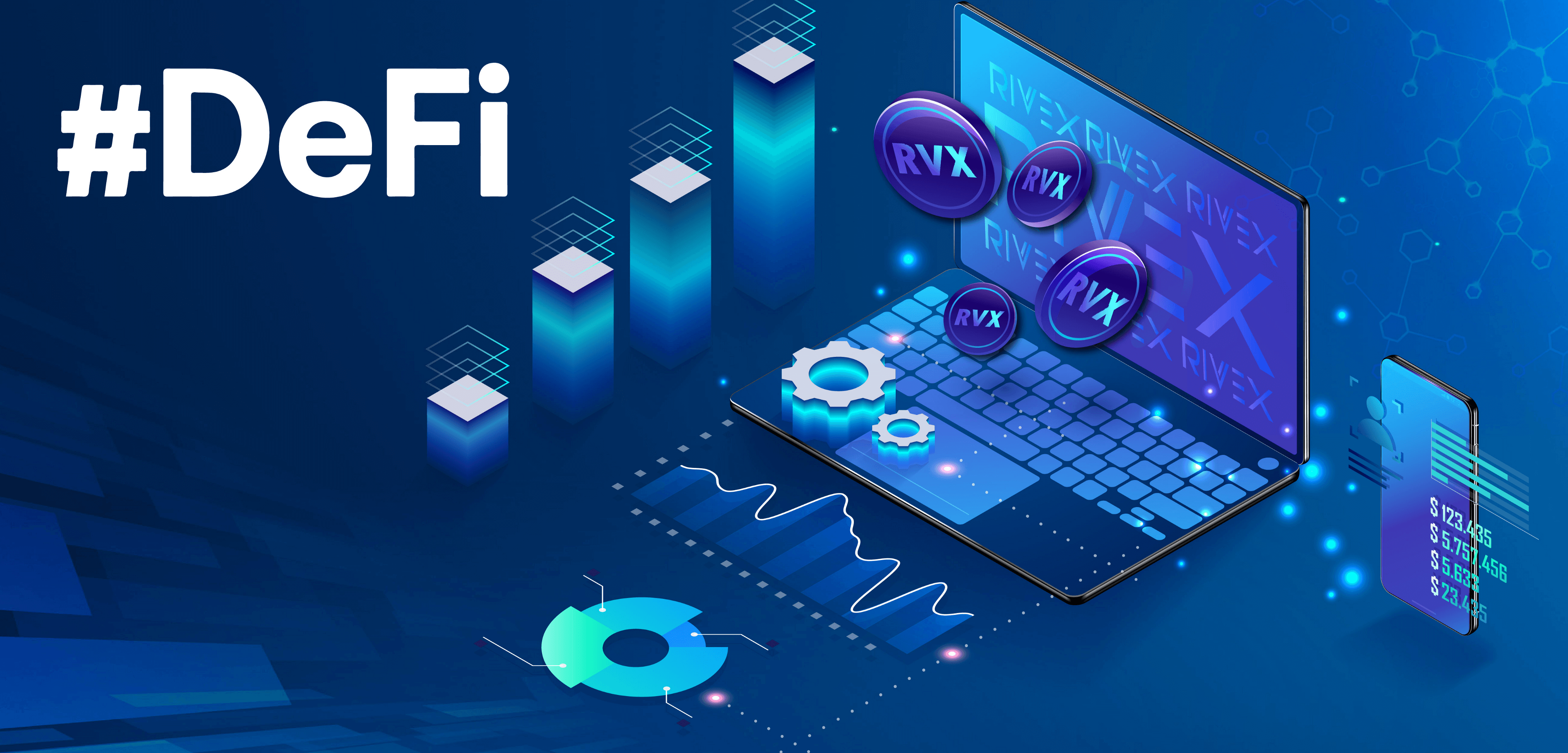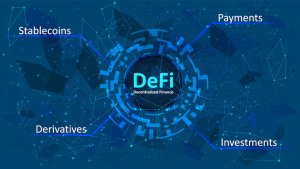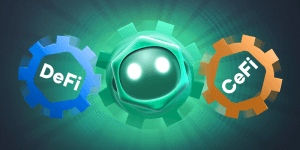Blockchain is revolutionary fintech, and DeFi applications are taking success in financial services to a whole new level. Over 1.7 billion people remain unbanked, and DeFi is empowering internet users with permissionless financial services that cut out third parties.
Investors locked more than $15 billion within DeFi protocols in 2020. While decentralization has only captured billions, traditional, centralized finance controls the vast trillions of dollars transacting globally. Therefore, more innovations and marketing will suffice for further adoption.
However, with the industry admitting roughly $500 million from investors monthly, the prospects are changing. DeFi offers irresistible convenience and cost-effectiveness. The potential is also vast.
DeFi encompasses digital lending, borrowing, staking for capital gains, and regular income. DeFi services are permissionless, and they execute most transactions through tokenization and smart contracts. Eliminating all the third-parties and profit-seeking intermediaries make DeFi cost-effective.
Laws, rules, and regulations are programmed into blockchain protocols, and DeFi impacts every aspect of traditional financial services via automation. The impact is so great that it could change human interactions on an international scale.
In this article, we are peering into DeFi and its impact on the finance industry. A chronological outlook of blockchain developments suggests a pattern of innovation and adaptability. Understanding this pattern is crucial for your future investment projects.
The Ethereum Blockchain: How Are dApps Taking over the Banking Sector?
To start with, let’s appreciate that the Ethereum community has revolutionized and accentuated DeFi as no other blockchain has. The ecosystem is advanced enough to evaluate systemic risks, and it reports DeFi Scores for platform security.
The ecosystem supports open-source composability, and the Ethereum blockchain harnesses the collaboration of independent developers worldwide. Borderless, open-source development has encouraged software designers and coding experts to focus on their strengths.
Ethereum’s infrastructure allows users to integrate various DeFi applications covering vast, diverse industries such as gaming, credit, supply-chain management, and capital markets. Laying and building applications on each other creates a vast network effect.
The Ethereum community is significant in DeFi because its network has over 7,083 live, global, main-net nodes, over 88 million unique users, over 42 million smart contracts executed.
You can utilize over 2,773 decentralized applications along with over 23K daily users. DApps are popular and post daily transactions exceeding 78K because of their:
- Open-source codes.
- Decentralized consensus and governance.
- Noncustodial, permissionless services.
- Tokenization and the use of smart contracts.
The diversity of dApps supports digital currency banking services, alternative services, DEXs, and P2P lending. Users embrace digital transactions because they are fast, secure, borderless, pseudo-anonymous, and irreversible.
Cross-chain interoperability came into DeFi markets in 2020, and you can now lend, borrow, and trade tokens across different blockchain networks.
How DeFi Saved Global Finance from Total Atrophy
When the Coronavirus became a global pandemic, states imposed mandatory lockdowns. Globally, the banking sector came to a standstill, and the international exchange services and other intermediaries such as asset managers, insurers, and bankers.
People were required to stay at home, and only essential services were allowed to proceed. If we didn’t have alternative financial services, most global supply chains would have suffered complete atrophy.
Governments created concerns about the value of money when they printed cash to bail out people and agencies. People and investors got more concerned that they pay taxes, yet governments dilute their savings by printing more money.
The threat to traditional finance was runaway inflation and the concern that credit is limited for those needing it the most. The international investment landscape went through shocks as investors turned to DeFi, seeking to mitigate the effects of a global pandemic.
Fintech Verticals Most Impacted by DeFi
Open Banking and Financial Data
Data is one of the most valuable commodities in the Mega Big Data era. Banking institutions traditionally hoarded all the financial data of users. In the US, financial data is worth over $15 billion. However, bankers won’t let you access it.
DeFi frees up your financial data for your benefit, allowing you to make intuitive, cost-effective investments. DeFi applications and services are providing open-source, immutable, financial market data.
Moreover, pseudo-anonymity and permissionless transactions prevent a handful of corporations from accessing your private transaction history.
Decentralized Exchanges
DEXs empower users to control their funds, giving them exclusive access to their private keys. These permissionless exchanges reduce the risk of custodian third-parties and diminish the risk of custodian third-parties losing your funds through major hacking events.
Cross-chain money markets are completely cutting off permission-based, custodian exchanges where you need expensive, third-party intermediation to swap bitcoins for other tokens like ETH, BCH, and XRP. Therefore, you can take just seconds to execute fast, borderless, almost-free transactions.
Borrowing and Lending
DeFi allows people to earn high interest on their savings. As crypto-assets stabilize volatility issues, DeFi is empowering crypto users to save profitably. You don’t need banks to store or transfer value. You can just use your smartphone and an internet connection to upload your finances to online savings software with blockchain transparency, security, and profitability.
DeFi platforms offer flexible interest payments, with some paying out interests every second. The best part is that you don’t need credit checks to take out DeFi loans. You only need to collateralize with your long-term investments. DeFi borrowing costs for commercial use are tax-deductible.
Tokenization and Asset Management
The tokenization of assets is at the core of decentralized finance. It’s revolutionizing assets-trading across the globe, offering traders new markets and opportunities. DeFi offers reliable asset and supply-chain management via smart contracts.
You can make international deals and trust total strangers to hold their side of the deal. Smart contracts don’t release payments unless all predetermined conditions are fulfilled. Tokenization is crucial in executing group contracts such as the ones utilized in:
- Liquidity pools.
- DeFi insurance protocols.
Parting Shot
The impact of DeFi on the banking sector threatens its existence, but bankers can adopt dApps to survive the storm and thrive. The banking sector won’t disappear, but it will evolve drastically as DeFi revolutionizes how we interact and do business.
Understanding the role of DeFi in 21st commerce is important for your financial future. Remember that these technologies offer cutting-edge convenience, and the market is growing exponentially. Therefore, you need to join in on the benefits or risk falling behind.
What do you think about DeFi, and what are your predictions on 2021 banking? Share your views in the comments section.






